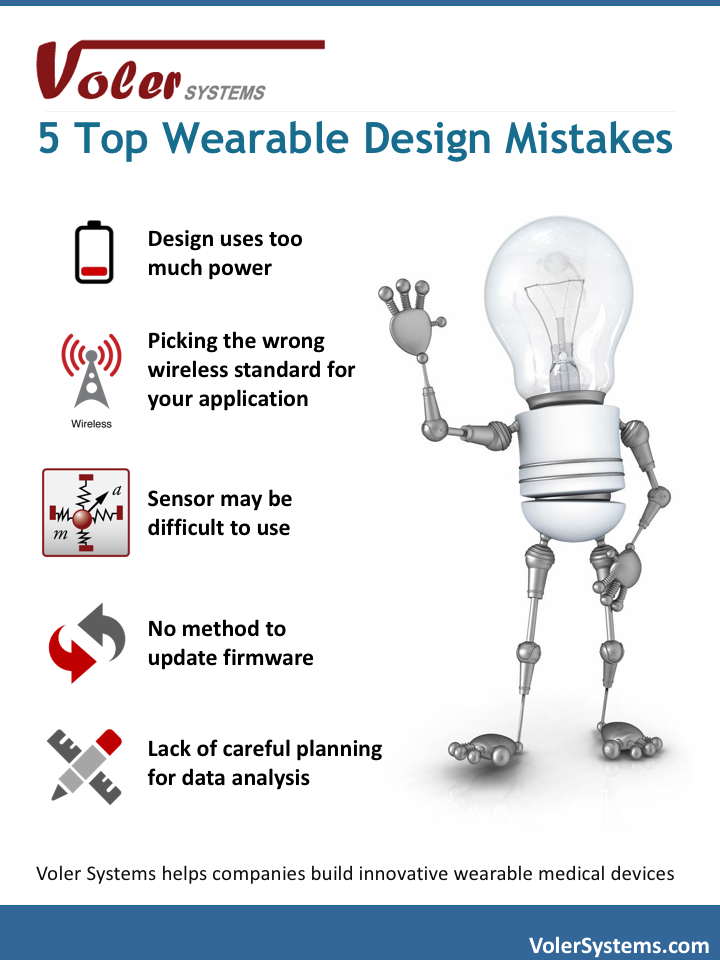Frequently, we are called in to perform design reviews of wearable devices. Here are a couple of common design mistakes we see for wearable devices:
Design draws too much power
To save power, you will want to turn off portions of your design when you’re not using them. Design and testing of shut-down and sleep modes can be very complex, and we see many issues with it. Doing this incorrectly means drawing more power than necessary.
Picking the wrong wireless for your application
Wi-Fi is not good for cheap battery-powered devices. While Wi-Fi has good transmission range, it comes with the strong disadvantage of high power usage and therefore shorter battery life. Other wireless standards, like Zigbee or the emerging LoRa, are often more appropriate. Bluetooth will not support the data bandwidth requirements for video transmission, but will work well for audio and low-bandwidth data for short distances.
Sensor may be difficult to use
Certain measurements are difficult on certain parts of the body. For example it is very hard to measure ECG on the wrist, but heart rate is not so hard. Breathing is also very hard to measure on the wrist, but quite straight forward on the chest. it is critical to decide what really needs to be measured and trade off the needed sensing with the convenience of wearing the device.
It can be a good idea to test two or three different sensors in parallel in a proof of concept deployment before making a final selection.
No method to update firmware
Bug fixes and new features will often require a software update. This capability will impact both hardware and software, as well as battery life. On the other hand, careful software design and testing can virtually eliminate the need to do updates. Updating a large number of devices wirelessly can be very expensive, and there is the risk that a new bug will make the devices in the field nonfunctional.
Lack of careful planning for data analysis
Sampling frequency and method of the data analysis, whether on the device or elsewhere, both have a huge impact on transmission rate, memory storage, processing performance and battery life! Collecting data faster than necessary will cost you more processing and battery life.
